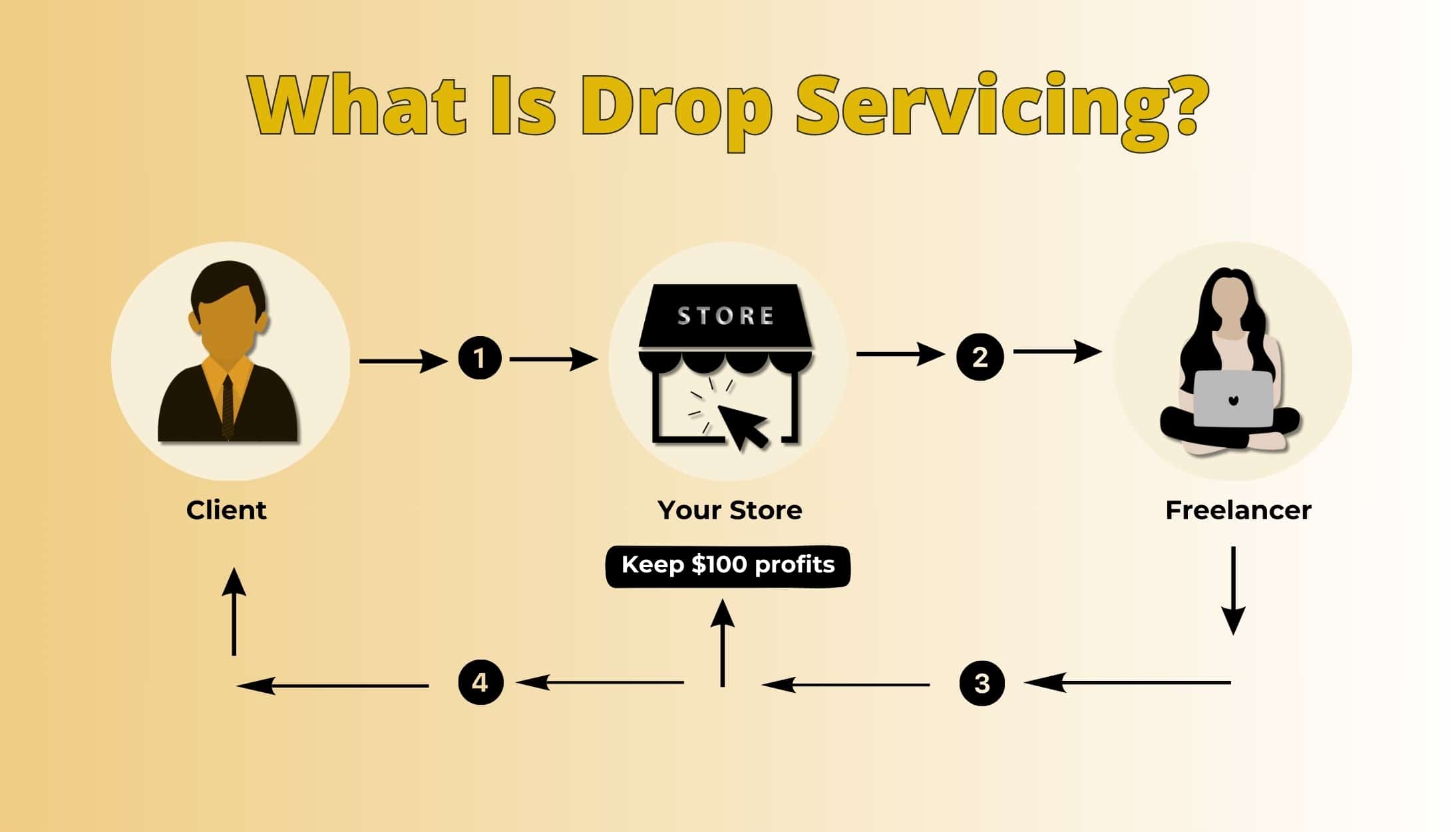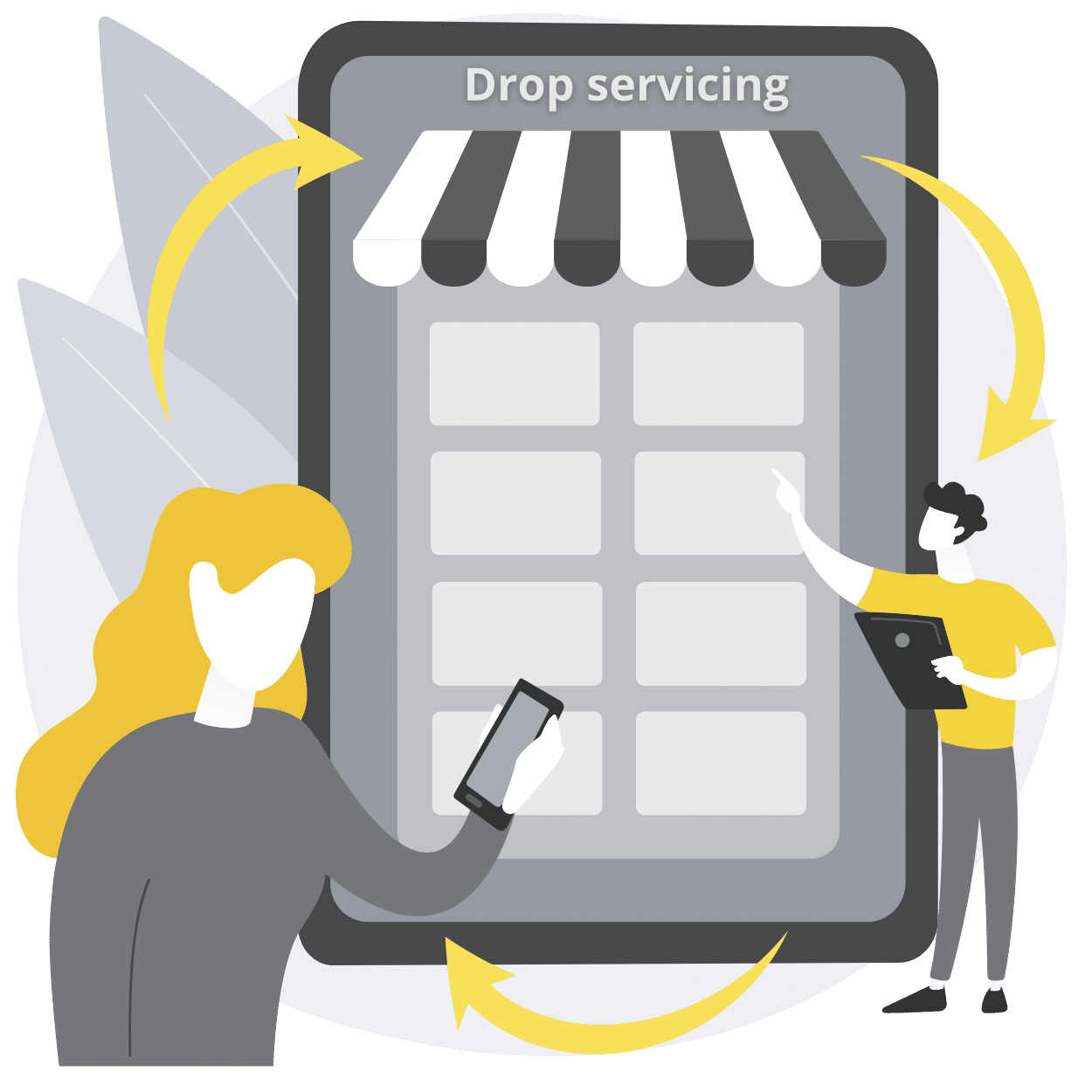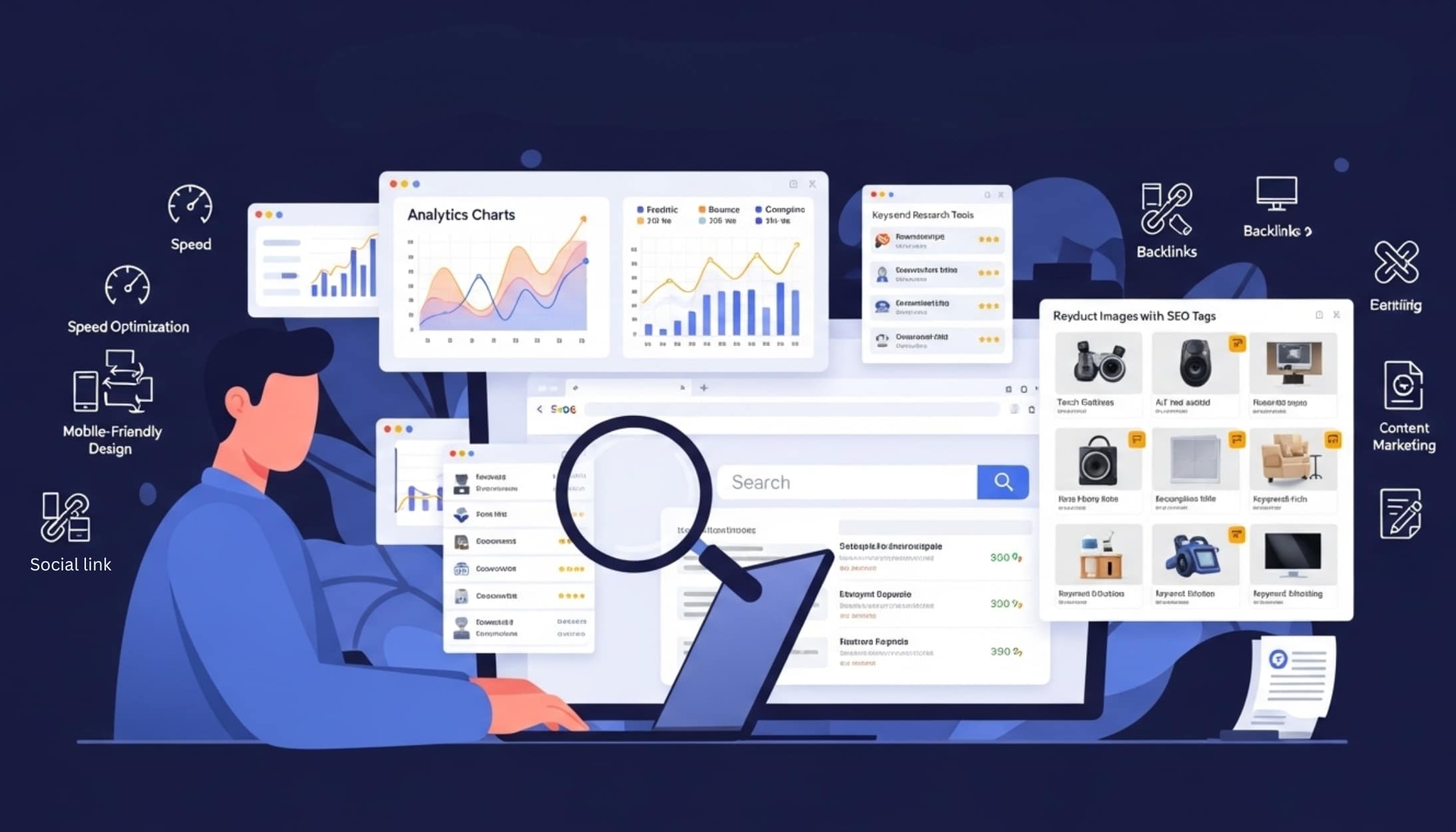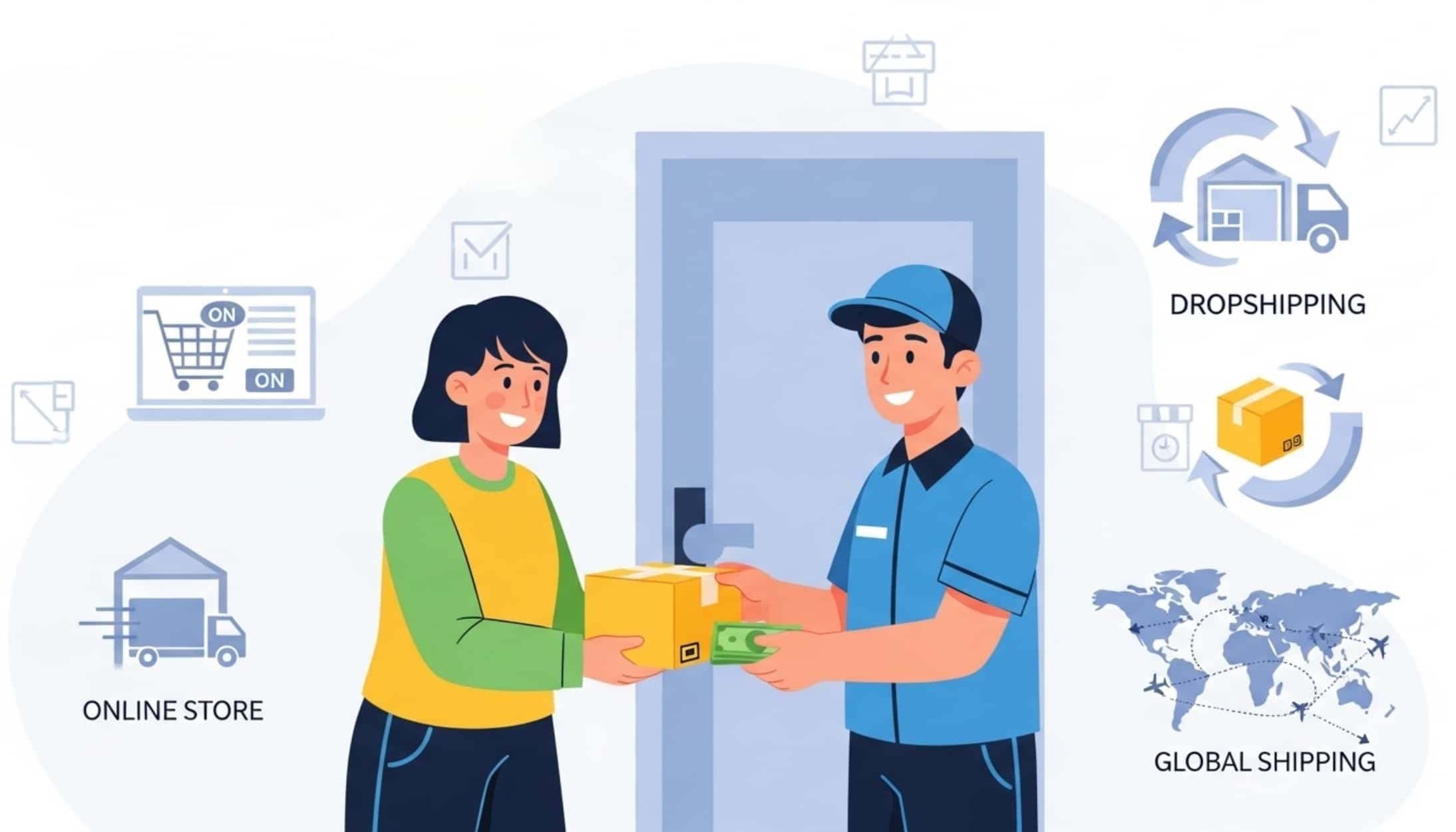Table of Contents
- What is Drop Servicing?
- How Does Drop Servicing Work?
- Benefits of Drop Servicing
- Drop Servicing vs Dropshipping: What’s the Difference?
- Things to Consider Before You Start a Drop Servicing Business
- How to Set Up a Drop Servicing Business
- Drop Servicing Business Ideas
- Eye-Opening Drop Servicing Statistics
- Conclusion
- FAQs
What is Drop Servicing?
Imagine running a business where you don’t actually do the work yourself. Sounds amazing, right? That’s what drop servicing is all about. It’s a business model where you sell services to clients, but instead of completing the work, you hire someone else—usually a freelancer or agency—to get the job done. Your job? Managing the process, ensuring quality, and delivering the final results to your clients.
Think of it as being the middleman (or middlewoman!). For example, let’s say a client needs a logo. You charge them $200, hire a talented graphic designer for $100, and keep the remaining $100 as profit. The best part? You don’t need to be a graphic designer or an expert in the service you’re offering—you just need to connect the dots.
How Does Drop Servicing Work?
Drop Servicing is as straightforward as it gets, and here’s a quick step-by-step breakdown of how it works:
- Choose a Niche: Pick a specific service to focus on, like web design, copywriting, or video editing. Narrowing down your niche helps you target the right audience.
- Set Up Your Platform: Create a professional website or landing page where potential clients can see your services, pricing, and testimonials.
- Attract Clients: Use social media, ads, or cold outreach to find people or businesses who need your services.
- Outsource the Work: Once you get a client, hire a freelancer or agency to complete the job. Websites like Fiverr, Upwork, and Freelancer are great places to find reliable service providers.
- Deliver the Service: Review the completed work to make sure it meets your client’s expectations, then pass it along to them.
- Earn the Difference: The profit you keep is the difference between what the client pays you and what you pay the freelancer.
It’s all about managing the process while your service provider handles the heavy lifting.
Benefits of Drop Servicing
Why is drop servicing becoming so popular? Here are a few reasons:
- Low Startup Costs: Unlike traditional businesses, you don’t need to invest in inventory, equipment, or even an office. A simple website and marketing budget are all you need.
- No Specialized Skills Required: You don’t have to be an expert in the services you’re selling. Your job is to connect clients with skilled freelancers.
- Flexibility: Drop Servicing is a business you can run from anywhere. Whether you’re at home or traveling, all you need is a laptop and internet connection.
- Scalability: As your business grows, you can easily offer more services or handle larger projects by hiring additional freelancers.
- High-Profit Margins: Services like web design, SEO, and video editing often have excellent profit margins, allowing you to earn significant income.
It’s a business model that’s perfect for entrepreneurs looking for flexibility and low-risk opportunities.
Drop Servicing vs Dropshipping: What’s the Difference?
It’s easy to confuse drop servicing with dropshipping since both models involve acting as a middleman. However, here’s how they differ:
- What You’re Selling: Dropshipping is about selling physical products (like clothing or gadgets), while drop servicing focuses on selling services (like graphic design or social media management).
- Delivery: Dropshipping involves shipping products directly to customers, while drop servicing delivers digital services.
- Setup Complexity: Dropshipping can be more automated, whereas drop servicing often requires direct communication with clients and freelancers.
If you enjoy working with people and solving problems, drop servicing is a great choice. It also tends to have higher profit margins compared to dropshipping.
Things to Consider Before You Start a Drop Servicing Business
Starting a drop servicing business is exciting, but here are a few things to keep in mind:
- Choose the Right Niche: Don’t try to offer everything. Focus on one or two services where demand is high and competition is manageable.
- Find Reliable Freelancers: Your reputation depends on the quality of work you deliver. Always vet your freelancers and build long-term relationships with the best ones.
- Understand Your Clients: Know your target audience’s needs and pain points. This will help you market your services effectively.
- Set Clear Expectations: Be upfront about timelines and deliverables with both your clients and freelancers to avoid misunderstandings.
- Stay Organized: Use tools like Trello or Asana to manage projects and keep track of deadlines.
How to Set Up a Drop Servicing Business
Ready to learn? Here’s how you can set up your own drop servicing business:
- Pick Your Niche: Focus on services like SEO, video editing, or social media management. Choose something that aligns with your interests and has high demand.
- Build Your Website: Use platforms like Wix, WordPress, or Squarespace to create a professional-looking site. Make it easy for clients to contact you.
- Find Freelancers: Look for experienced freelancers on platforms like Fiverr or Upwork. Always check reviews and ask for samples.
- Market Your Business: Use social media ads, email campaigns, or even LinkedIn outreach to attract potential clients.
- Deliver High-Quality Work: Review every project before delivering it to your client. Your reputation depends on it.
- Scale Gradually: Once you have a steady flow of clients, expand your service offerings or hire a virtual assistant to handle admin tasks.
The key is to start small, stay consistent, and refine your process as you go.
Drop Servicing Business Ideas
Not sure what services to offer? Here are some profitable drop servicing ideas:
- Graphic Design: Logos, banners, and branding materials.
- Content Writing: Blog posts, copywriting, and technical writing.
- Video Editing: YouTube videos, promotional clips, and animations.
- SEO Services: Keyword research, on-page optimization, and backlink building.
- Social Media Management: Creating posts, running ads, and engaging with audiences.
Choose a niche that excites you and has strong demand.
Eye-Opening Drop Servicing Statistics
Here are some numbers that show why drop servicing is such a promising business model:
- The global freelancing market is expected to reach $12 billion by 2028, fueled by the rise of remote work and digital services.
- Popular drop servicing niches like graphic design, content writing, and SEO have profit margins ranging from 30% to 70%.
- Over 36% of the global workforce is involved in freelance work, giving you a vast pool of talented service providers to choose from.
- These stats prove that the demand for digital services is only going to grow, making drop servicing a lucrative opportunity.
Key Drop Servicing Statistics And Facts
- Search Interest: Over the past five years, global search interest in “drop servicing” has surged by more than 6,500%, indicating a significant rise in awareness and curiosity about this business model. (Source: DoDropshipping)
- Profit Margins: With effective pricing strategies, drop servicing can yield substantial profit margins, often ranging between 70-85%. (Source: Side Hustle Science)
- Revenue Potential: New drop servicing businesses can generate between $500 to $5,000 per month in revenue, with the potential to scale beyond $20,000 per month with the right systems in place. (Source: Side Hustle Science)
- Emerging Niches: In 2024, top drop servicing niches include graphic design, content writing, programming, and marketing activities, offering lucrative opportunities for entrepreneurs. (Source: Drop Servicing Mogul)
- Market Evolution: Drop servicing has gained significant traction over the past decade, evolving into a popular business model that focuses on delivering services rather than physical products. (Source: Ecom Business Hub)
Business Model and Strategy
Profit and Investment
- Profit margins fluctuate in response to market demand, service quality, and competition, offering various profit possibilities.
- Entrepreneurs benefit from the low initial investments required in drop servicing, enhancing accessibility compared to traditional models.
- Initial costs for starting a drop servicing business can range from $62 to $35,923. (Source: Starter Story)
- Profitability in drop servicing varies, with some businesses reporting incredibly high margins.
Conclusion: Is Drop Servicing Right for You?
Drop Servicing is a fantastic way to start a business without the need for significant upfront investment. It’s flexible, scalable, and offers high profit margins. If you’re organized, good at managing people, and love the idea of building a business from anywhere, drop servicing might be the perfect fit for you.
So, what are you waiting for? Pick your niche, set up your business, and start building your drop servicing empire today!
FAQs
1.What is drop servicing?
Drop Servicing is a business model where you sell services to clients but outsource the actual work to freelancers or agencies. You manage the process and earn the profit margin between what the client pays and what you pay the service provider.
2.How does drop servicing work?
Drop Servicing works in a few simple steps: you find clients, offer services, outsource the work to a freelancer, review the completed work, and deliver it to the client while keeping the profit margin.
3.Is drop servicing profitable?
Yes, drop servicing can be very profitable, with profit margins ranging from 30% to 70%, depending on the service and pricing strategy. Success relies on finding in-demand services and skilled freelancers.
4.What are the best niches for drop servicing?
Profitable niches include graphic design, SEO services, content writing, video editing, and social media management. Focus on niches with high demand and good profit margins.
5.Do I need technical skills to start drop servicing?
No, you don’t need to be an expert in the services you offer. Your role is to manage clients and freelancers. However, understanding the basics of the services can help you ensure quality and communicate better.
6.How do I find reliable freelancers?
Use platforms like Fiverr, Upwork, and Toptal to find skilled freelancers. Always check reviews, ratings, and work samples before hiring.
7.What challenges should I expect in drop servicing?
Common challenges include finding reliable freelancers, managing client expectations, and ensuring consistent quality. Clear communication and building long-term relationships with freelancers can help overcome these issues.



 Low Investment, High Profit Margins
Low Investment, High Profit Margins



